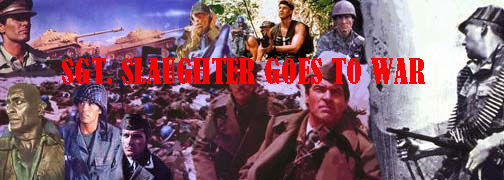
I BOMBED PEARL HARBOR (1960)
DIRECTOR:
Shuei Matsubayashi and Hugo Grimaldi
CAST:
Yosuke Natsuki, Toshiro Mifune, Misa Uehara, Makoto Sato, Koji Tsuruta, Tatsuya Mihashi, Akira Takarada, Susumu Fujita, Takashi Shimura, Akihiko Hirata and Jun Takazi.
REVIEW:
I’ll be up front about my experience with Japanese cinema: it ranges from foggy memories of Godzilla flicks on TNT back in the mid-1990s, and more recently, a few Japanese war films. I don’t know who many of the actors are, and cannot find much information on the web (or elsewhere) about this genre. I recognize names, not faces. More importantly, many of the Japanese films from the 60s and 70s emerged in the US totally butchered or altered into completely different movies. “I Bombed Pearl Harbor” holds up quite well in spite of dubbing, re-scoring and editing.
This film has got to be one of the best productions about World War II in the Pacific theater, solely because it offers an honest, unflinching look at the Japanese point of view. It’s free of annoying clichés, strong performance and features a number of well-shot action scenes, filmed entirely in miniature.
This is a movie about the men in front lines doing their job. The Japanese pilots are the main characters, here, shown to be just as patriotic and honorable as the American GIs audiences are used to seeing. They’re not saints, nor are they demons – they are ordinary young men, full of ambition and ready to take on the world. But the horrors of war will change this attitude. We see the course of the surprise attack on Pearl Harbor and the Midway campaign through the eyes of Koji (Yosuke Natsuki), a navigator. The film is faithful to historical facts, and even though it’s made from the Japanese point of view, it remains honest without stretching the truth.
There are numerous battle sequences throughout the film. Japanese special effects master Eiji Tsuburaya directed these sequences, and he handles every frame beautifully. Although it’s obvious that the planes are models and the ships are floating in tanks, we see no obvious guide wires and the proportions are very close to perfect. The scenes on the ground and aboard ship have a very realistic look and feel to them, unlike many Hollywood films from the same time period. Scenes on the bridge of an aircraft carrier and in the hangers look much more authentic than those in 1976’s “Midway”, which was evidently lensed on cheap soundstages.
The performances are above average. As Koji, the young Natsuki makes a big impression. We first meet him when he’s fresh out of training, ready to fly off and bomb Pearl Harbor for the glory of the emperor and his homeland. Things change rapidly: in the middle of his wedding, he is ordered to report back to his carrier, which is to leave for the Midway invasion. There, many of his friends get shot down. His best friend, Matsura (Makoto Sato) almost doesn’t make it. By the end of the movie, very few of the original cast are remaining. Of the ensemble, Toshiro Mifune (“Hell in the Pacific”) makes a very great Admiral Yamaguchi; his last few scenes are touching and emotion-laden.
There are a few strikes against this film as it stands now. The first is the miserable dubbing. Some of the dialog comes out with conviction, while other lines sound as though they’re being read from cue cards with no emotion or inflection. The North American home video release is taken from a rather battered print, full of holes, speckles, scratches and splices. There are missing snippets of dialog and even some missing frames. The only good thing to say is that this print is letterboxed 1.85:1, a necessity for the combat sequences. A fully restored copy of the original version, which runs 118 minutes (as opposed to a re-scored, edited 98 minute American version) would make this viewing even better.
As it stands now, “I Bombed Pearl Harbor” is a clearly-told, engaging and well-shot war film offering some outstanding miniature work and unique look at World War II. This is definitely worth watching.
SGT. SLAUGHTER'S RATING:
4 Bullets